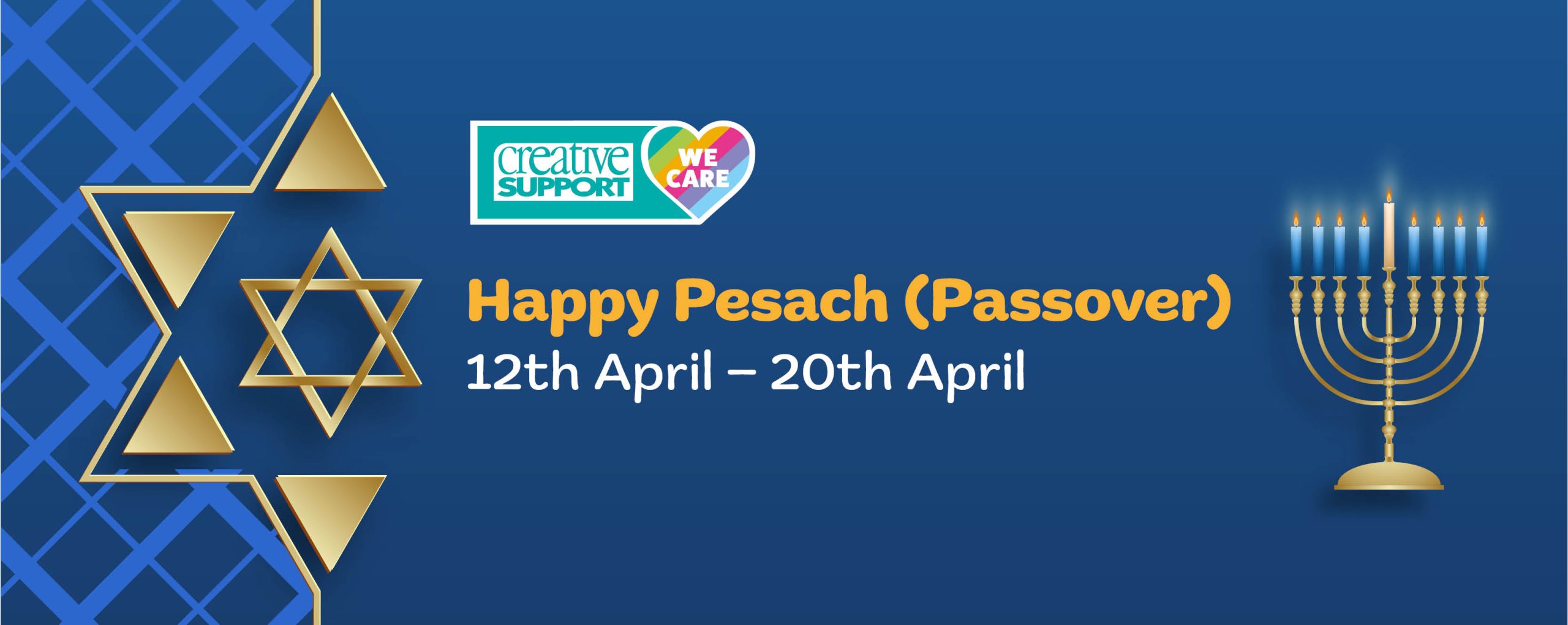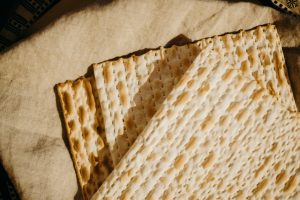Happy Pesach!

Esther has worked for Creative Support for over seven years as the PA to the Head of Engagement and Learning, and provides support to our Training Administrators.
As Pesach, also known as Passover, is coming up, she has explained what the Jewish festival celebrates and what a typical day involves.
Pesach (this year running from 12th April – 20th April) is one of the major festivals that Jewish people celebrate throughout the year, and Esther is here to explain why.
What does Pesach celebrate and how long does it last for?
Pesach lasts for eight days and remembers the Jewish exodus during biblical times. During this period, Jewish people were slaves of the Pharaoh and were tasked to build his pyramid. Pesach celebrates the Jewish liberation from slavery and getting out of Egypt and the freedom this gave them – although they spent 40 years wandering in the desert afterwards!
What does a typical day during Pesach include?
Pesach is centred on lots of things that symbolise slavery. During this time we change the foods we eat. If you’re Orthodox then you have two sets of pots and pans. One set is for general food, and the other is only used during Pesach as the foods we eat are restricted.
One thing we can’t eat is unleavened bread, so we eat matzah instead which are like big crackers. This is because when the Jewish people were fleeing from Egypt they didn’t have time to let the yeast rise and had to let it dry in the sun, which created matzah. Because of this we aren’t allowed to eat things such as flour or use any typical bread ingredients. We also have to have ‘Pesach certified’ foods, so we can buy things from Kosher shops that have been specially prepared for Pesach that haven’t been near any bread ingredients just in case of contamination.
Before Passover you would sell your ‘Chametz’ or ‘unleavened’ foods such as bread to non-Jewish people. It’s a symbolic transaction and doesn’t involve the actual sale of the bread, but it means it’s been given away and you’ve cleansed your house. The night before Passover you also do the symbolic search of the house for anything non-Pesach certified. You wouldn’t normally find something because it’s been taken out of the house in preparation for Pesach, so families put little bits of bread around the house and people wander with a candle and a feather and sweep it up to show that your house is clean and you’re ready to bring Pesach in.
The first two days of Passover and the last two are the holy days where we follow Shabbat rules such as no electricity. In the first two evenings you have a Seder service. Lots of people do the service in their own homes.
Growing up we used to regularly have two Seders at our home where we would invite people over for an evening of prayers and food. Part of its purpose is to talk to children about the Passover story and explain it to them. During the evenings we talk about the ten plagues of Egypt when God was trying to intervene to get the Pharaoh to allow the Jewish people to leave. We have a list of them which we go through and customarily dip a finger in wine and spill a drop for each one. The first is blood, which is when the rivers in Egypt turned to blood. Others are mainly environmental, such as the plague of frogs or locusts. The last plague was the death of the firstborn son of every non-Jewish person and was the one that made the Pharaoh change his mind.
Aside from matzah we also eat symbolic food on a Seder plate. Bitter herbs (Maror) is one of the sections and can be represented by lettuce or more commonly with horseradish root which we grate and eat with matzah. The bitter herbs represent the hardships of slavery. We also have an egg in saltwater, the saltwater of which represents tears while the egg represents fertility, growth and new beginnings. We also have a burnt shank bone to represent offerings in the Temple. There is also Charoset which is a sweet paste made from ground walnuts, apples and a drop of wine which represents the mortar used to build the pyramids. You eat these foods at certain points during the evening.
There is also a point during the Seder where you fill a cup of wine to the brim and say a prayer to the angel Elijah who is said to visit everyone’s home on Pesach. There is also a game for the kids or the youngest people at the table. You break a matzah in half and hide one half which the kids have to go and find to win a prize. This is known as the Afikomen.
Over the first two and the last two days of Pesach you would also go to Shul (Synagogue) at certain times like you would on Shabbat. However, at Shul you’re usually given food but during Pesach we can’t as they wouldn’t be able to make the kitchens Pesach certified.
Can you explain the significance of Pesach as a holy day in the Jewish Calendar?
Pesach is one of three major festivals, along with Shavuot (1st June – 3rd June) and Sukkot (6th October – 13th October), and is separate from Yom Kippur and Rosh Hashanah (the Day of Atonement and the New Year respectively). Pesach, Shavuot and Sukkot are known as the Shalosh Regalim or the Three Pilgramage Festivals.
Pesach is the most like Christmas in the non-Jewish calendar. It’s so significant because of the amount of preparation that goes into the festival beforehand, because it commemorates freedom from slavery and encourages loved ones to gather together.

